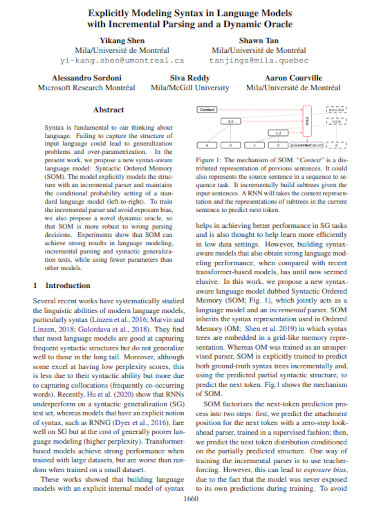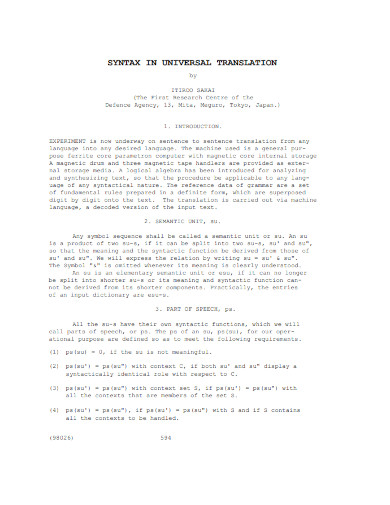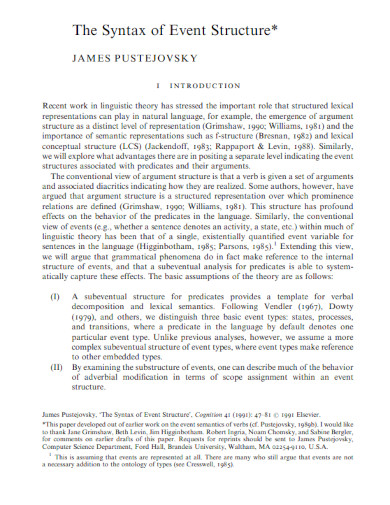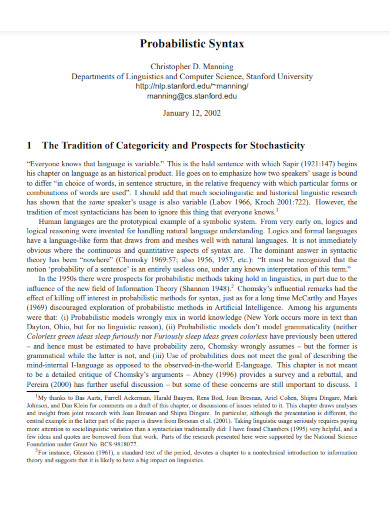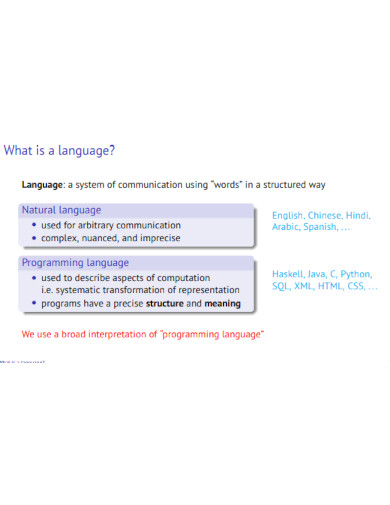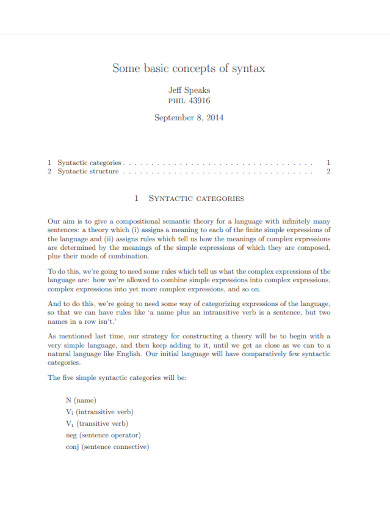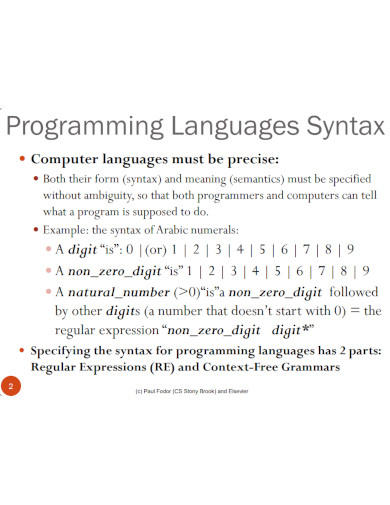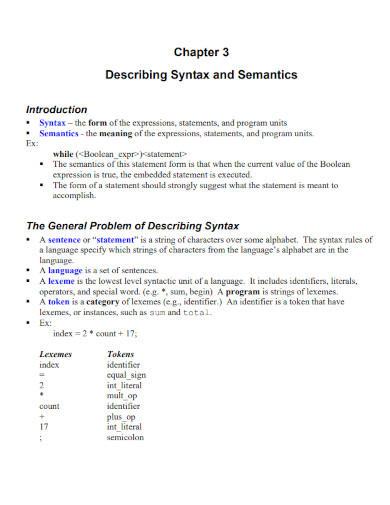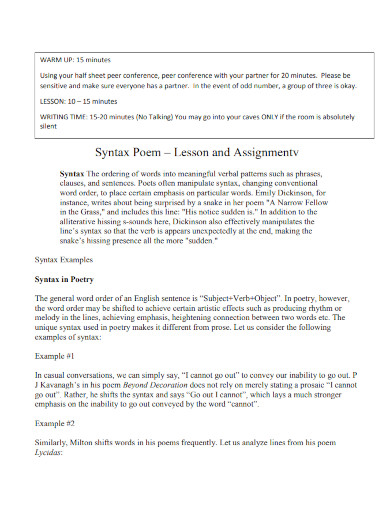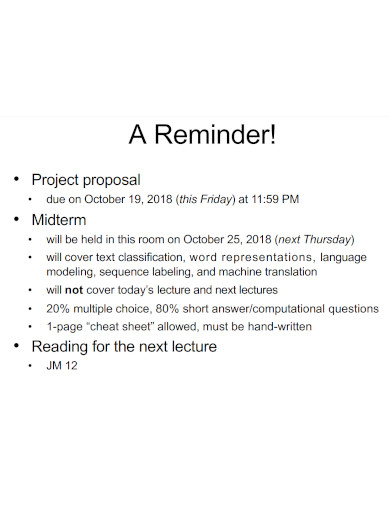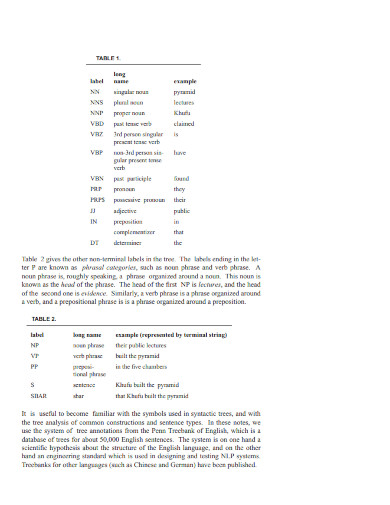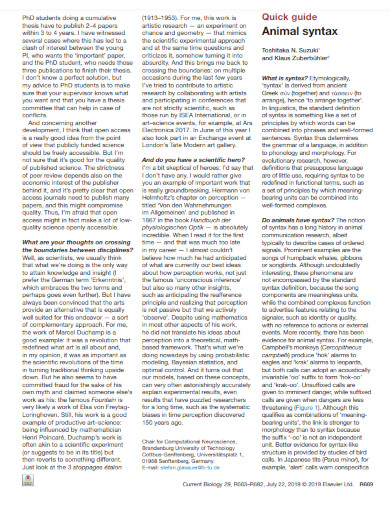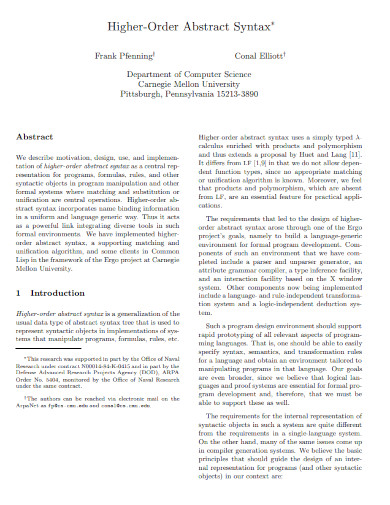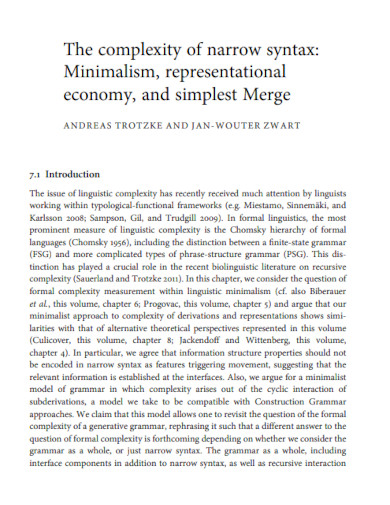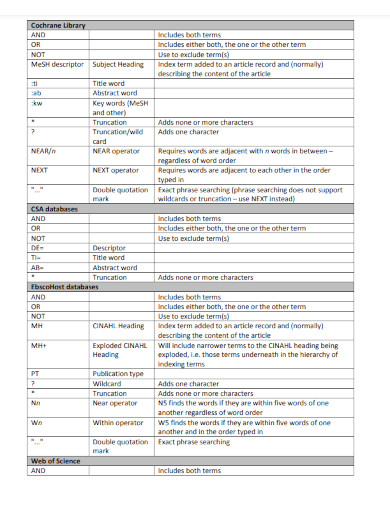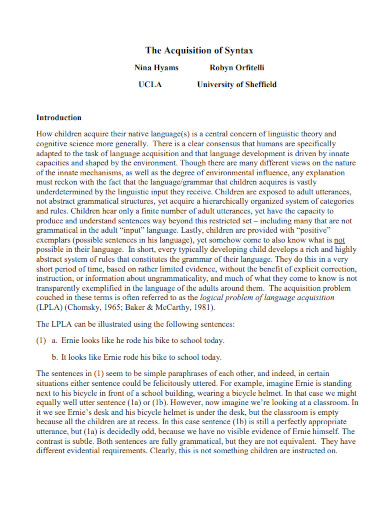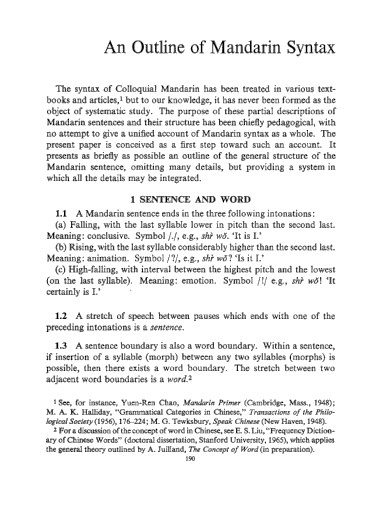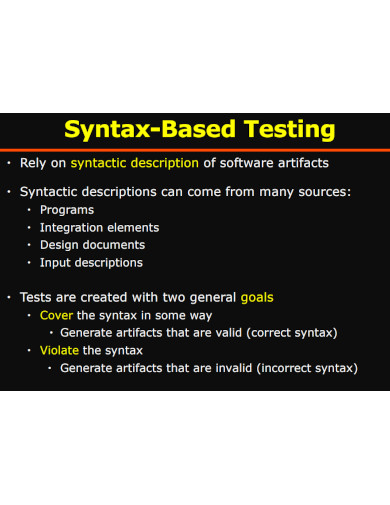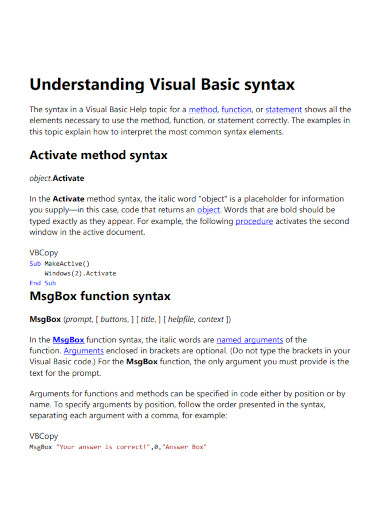Syntax
English has quite a complex figurative language as there are a lot of rules you need to follow. Especially when it comes to writing English sentences. When writing sentences, you must not only be grammatically correct, but you must also be syntactically correct.
What is Syntax?
Syntax refers to the set of rules, principles, and processes that govern the structure of sentences in a given language, including the order of words and phrases and the relationships among sentence elements. It involves the correct arrangement of words to make meaningful sentences.
The basic rules of syntax in English
- Subject-Verb-Object Order: The most common sentence structure in English is the Subject-Verb-Object (SVO) order. For example:
- “She (subject) eats (verb) apples (object).”
- Agreement Between Subject and Verb: The verb must agree with the subject in number and person. For example:
- “He runs,” not “He run.”
- “They write,” not “They writes.”
- Consistent Tense: Tenses should remain consistent in a single sentence or a related group of sentences unless there’s a shift in the time frame. For example:
- “She went to the store and bought some milk.” (Both verbs are in the past tense.)
- Use of Modifiers: Adjectives and adverbs should be placed as close as possible to the words they modify to avoid confusion. For example:
- Correct: “She quickly finished her assignment.”
- Incorrect: “She finished quickly her assignment.”
- Proper Placement of Clauses: Relative clauses that provide additional information about a noun should be placed next to the noun they describe. For example:
- “The book that I borrowed was interesting.”
- Avoid: “The book was interesting that I borrowed.”
- Use of Prepositions: Prepositions must be followed by their correct objects and should be used appropriately to convey the correct relationship regarding time, place, or other details. For example:
- “She sat on the chair.” (not “She sat in the chair” when referring to sitting on top of it.)
- Punctuation: Proper punctuation helps clarify the structure and meaning of sentences, such as using commas, periods, and question marks appropriately. For example:
- Using commas to separate clauses: “If it rains, we will stay inside.”
Types of syntax
- Constituent Syntax: This type of syntax focuses on the way words combine to form constituents (or parts) of sentences, such as phrases and clauses. It emphasizes the hierarchical structure within sentences, where larger units are broken down into smaller units. This approach is fundamental in theories like Generative Grammar.
- Dependency Syntax: Unlike constituent syntax, dependency syntax is based on the relationships between words through dependency links. It posits that the structure of a sentence consists of words connected by links that show dependency (where one word directly depends on another for its function or meaning), rather than being grouped into phrases necessarily. This approach is useful for understanding how different languages handle sentence structure.
- Categorial Syntax: This syntax type uses the properties of categories to explain how sentences are formed. It relies on a small set of syntactic categories and rules about how these categories can combine. Each category is associated with a specific syntactic function, and sentences are formed by the combination of these categories according to specific rules.
- Phrase Structure Syntax: A type of constituent syntax, phrase structure syntax involves the creation of syntactic trees that represent the internal organization of sentences. Each node in the tree denotes a syntactic category, and the branches show how these categories are combined to form the sentence. This type is central to many theories in modern linguistics, like the Government and Binding Theory and the Minimalist Program.
- Lexical-Functional Syntax (LFG): This approach emphasizes the dual nature of linguistic structure, distinguishing between the deep structure (abstract grammatical relationships and functions) and the surface structure (the specific word order). LFG models these structures and their interaction to analyze how different elements of a sentence relate to each other on a functional level.
- Head-Driven Phrase Structure Grammar (HPSG): This type blends properties of both phrase structure and dependency syntax. It employs complex feature structures that integrate information about syntactic categories, functions, and semantic roles, providing a detailed and nuanced way of describing the syntax and semantics of sentences.
Difference Between Syntax and Diction
| Aspect | Syntax | Diction |
|---|---|---|
| Definition | Syntax refers to the rules and principles that govern the structure of sentences in a language. | Diction refers to the choice of words and style of expression that an author uses in writing. |
| Focus | Focuses on how words are arranged within sentences and how sentences are structured. | Focuses on word choice and the appropriateness of words in conveying a particular meaning. |
| Purpose | To create meaningful sentences that are grammatically correct. | To convey tone, style, and voice, influencing how a message is received. |
| Components | Involves word order, sentence structure, agreement, and punctuation. | Involves vocabulary, language usage, and the level of formality or informality. |
| Impact | Affects readability and clarity of the text; essential for logical flow and coherence. | Affects the perception of the writer’s persona and can evoke specific emotions and reactions. |
| Study Area | Typically studied in grammar and linguistics. | Typically studied in literary analysis and creative writing. |
Syntax vs. Grammar
| Aspect | Syntax | Grammar |
|---|---|---|
| Definition | Syntax refers to the rules that govern the structure of sentences. | Grammar encompasses all the system and structure of a language, including syntax, morphology, and sometimes phonetics. |
| Focus | Focuses primarily on word order, sentence structure, and relationships between words. | Focuses on broader linguistic rules including word formation, tense, punctuation, and sentence structure. |
| Scope | Narrower, dealing specifically with how words are arranged in sentences. | Wider, covering all aspects of language construction and use. |
| Purpose | To ensure sentences are constructed correctly to convey clear meaning. | To provide a comprehensive set of guidelines for correctly using language, both in writing and speaking. |
| Components | Includes sentence types, clause structures, and word order. | Includes syntax, morphology (study of word forms), phonetics, and semantics. |
| Examples | Deciding between “The dog bit the man” and “The man bit the dog” based on intended meaning. | Rules about conjugating verbs, using the correct verb tense, correct use of plurals, and proper punctuation. |
1. Explicitly Modeling Syntax in Language Models
2. Syntax in Universal Translation
3. Syntax of Event Structure
4. Probabilistic Syntax Template
5. Syntax and Grammars
6. Some Basic Concepts of Syntax
7. Programming Language Syntax
8. Specifying Syntax Template
9. Describing Syntax and Semantics Template
10. Syntax Poem Template
11. Introduction to Syntax
12. Tree Syntax of Natural Language
13. Animal Syntax Example
14. Higher-Order Abstract Syntax
15. Complexity of Narrow Syntax
16. Summary of Verilog Syntax
17. Database Syntax Guide
18. Acquisition of Syntax
19. Outline of Mandarin Syntax
20. Syntax-Based Testing
21. Understanding Visual Basic syntax
Syntax in literature
- Sentence Structure: Authors can vary sentence length and structure to create different effects. For instance, short, abrupt sentences might create tension or urgency, whereas long, flowing sentences can establish a more relaxed or contemplative tone.
- Punctuation: Creative use of punctuation can influence the rhythm and pace of a text. For example, frequent use of commas and semicolons might slow down the reading process, adding complexity or reflecting the interconnectedness of ideas.
- Parallelism: This involves using the same grammatical structure in different parts of a sentence or in consecutive sentences. It can add balance and rhythm to writing, making it more memorable and impactful. For example, Martin Luther King Jr.’s “I Have a Dream” speech uses parallel structure extensively to emphasize his vision.
- Repetition: Authors may repeat certain phrases or sentence structures to emphasize a particular point or theme. This can enhance the lyrical quality of the text and help reinforce key messages or emotions.
- Inversion: Sometimes, writers invert the typical word order in sentences (anastrophe) to draw attention to specific words or ideas, or to achieve a particular metric or rhymic effect.
- Sentence Variety: Mixing different types of sentences (simple, compound, complex, and compound-complex) helps maintain reader interest and allows the author to convey nuances of meaning.
- Fragments and Run-ons: While typically considered grammatical errors, sentence fragments and run-on sentences can be used deliberately in literature to convey particular artistic effects or the mental state of a narrator.
How to Use Syntax
To make your sentences understandable, you must also follow the specific rules in grammar, and this includes syntax in your sentences. Writing sentences can be tricky when the format is incorrect. To avoid that from happening in the future, here are guidelines to follow for proper sentences.
Step 1: Subject-Verb Agreement
The most basic format for syntax is the subject and verb in the sentence. This is mainly seen in simple sentences like “the cat ate.” From this sentence, you can see that the subject in the sentence is the cat and the verb is “ate.” In cases like this, the subject always comes first.
Step 2: Subject Verb Object
When using the format for subject, verb, and direct object the rule here is different. If you use a transitive verb and a direct object, the direct object is first before the transitive verb. Unlike in its simple form where the subject is first then the linking verb.
Step 3: Subject Verb Subject Complement
The outline or the format for this syntax sentence is the subject complement will come after the verb instead of the other way around. You can tell whether it is a subject complement as they always use or have linking verbs with them.
Step 4: Subject Verb Adverbial Complement
The last format of syntax sentences is the subject-verb to adverbial. Just like the previous format of the sentence for syntax, the adverbial complement comes after your verb, and this only happens if there is no direct object in the sentence.
FAQs
What does syntax mean?
Syntax is the set of rules, principles, and processes that govern the structure of sentences in a language. It involves the arrangement of words and phrases to create well-formed sentences.
What is a simple syntax?
Simple syntax refers to basic sentence structures that involve straightforward rules for combining words. Typically, this includes simple sentences like “Subject + Verb + Object,” such as “The cat sleeps.”
Is syntax just grammar?
Syntax is a component of grammar focused specifically on the structure of sentences, including word order and the way phrases and sentences are constructed. Grammar also includes morphology, punctuation, and other linguistic aspects.
What is a real life example of syntax?
A real-life example of syntax is the difference in meaning between “Let’s eat, Grandma!” and “Let’s eat Grandma!” The placement of the comma dramatically changes the sentence’s meaning, illustrating the importance of syntactic rules.
What are the types of syntaxes?
There are many types of syntax used in sentences. The most common one is the subject-verb agreement in the sentence. But these are also the other types that can be found in complex sentences as well. The types of syntaxes in a sentence include subject and verb agreement, subject, verb, direct object, subject, verb, and indirect object.
Why do you need to have the syntax in a sentence?
Syntax in grammar helps in many ways. They are used as a way to make your sentences better that can be explained correctly. Their use in sentences is very well known, and without following the syntax rule, your sentences will sound different and will also look different. Regardless if your sentences are grammatically correct but the format of them is wrong. When you do not use syntax in a sentence, your sentences will not only make sense, but their format will also differ.
What other ways can syntax be used?
The syntax can also be found in the subject of Mathematics and other IT-related topics. But it is common knowledge to find syntax being used as a means to formulate the proper sentence structure. As syntax is more commonly seen in grammar-related subjects. Syntax in mathematics is based mainly on mathematical solutions, while syntax in English topics helps by rearranging your sentences to make them sound good or better.
When you think of syntax, the first thing you may think of or may talk about is either a mathematical problem or something that relates to grammar and sentences. Both of you can commonly find the word syntax. However, in mathematical problems, the syntax has a different use. We know for a fact that syntax in English is used as a way to format your sentences for them to make sense. The use of syntax in sentences makes it easier or clearer for the person to read and understand what you are trying to say.



